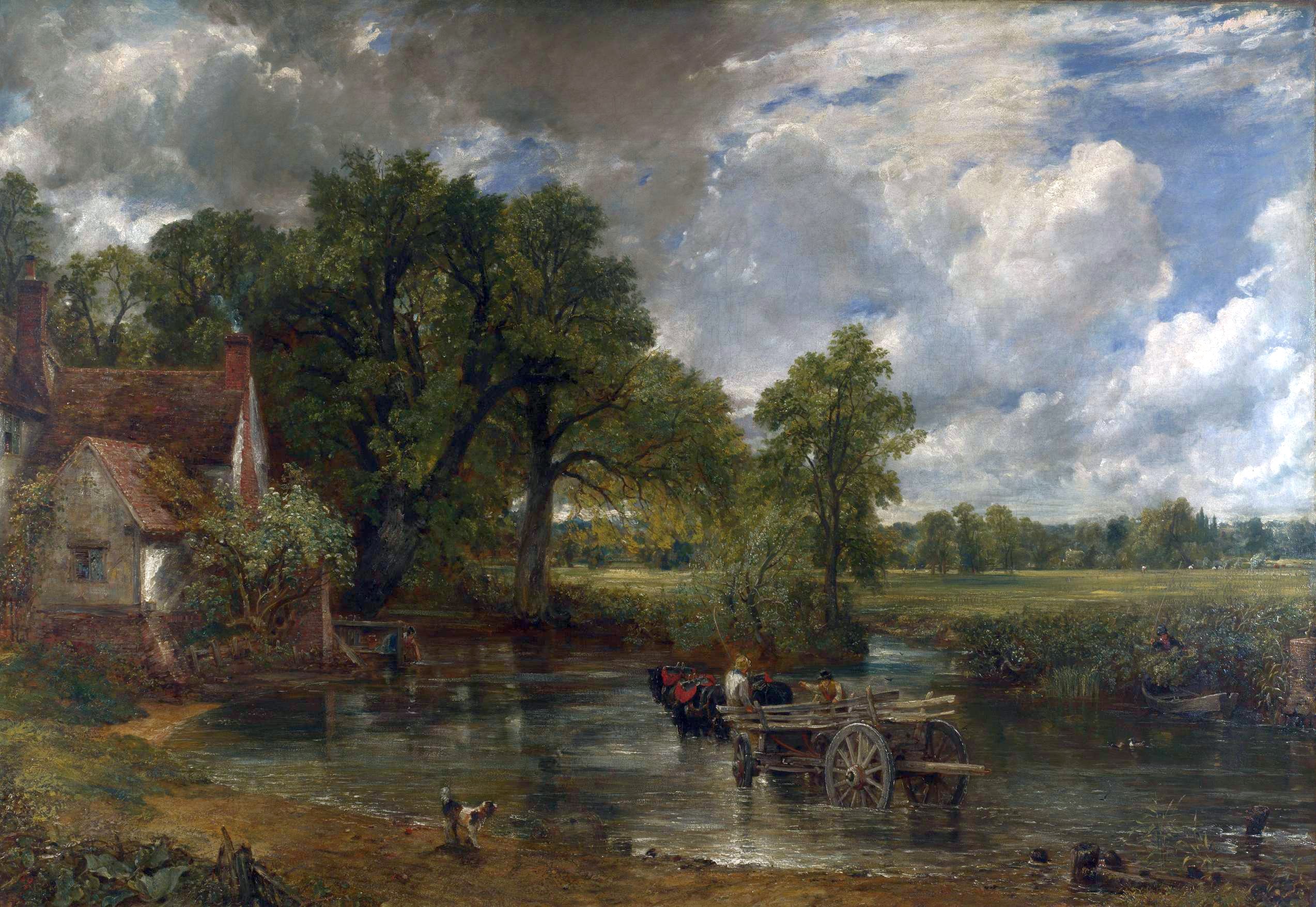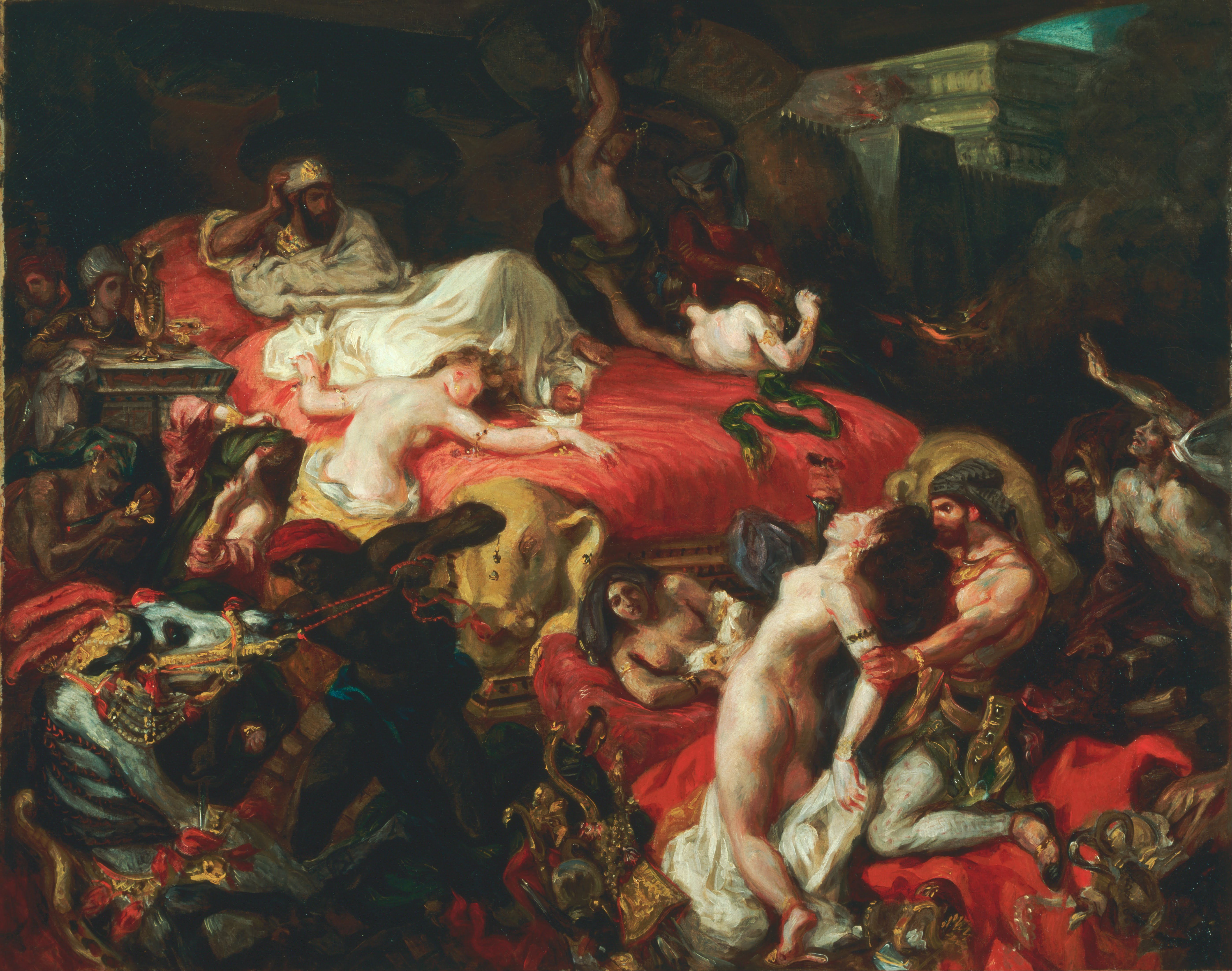Mackenzie Patel
Hello World Travelers!! Here is the second part of my pairing symphonies with paintings series. Find part one here!
Peer Gynt
This musical suite, orchestrated in 1875 by Edvard Grieg, was written for a Norwegian play of the same name by Henry Ibsen. Peer Gynt is the main character in the 1876 play, and he portrays the poetic son of a reckless spender. Find the full summary of the Romantic drama here. Whatever the convoluted story behind it, the opening movements of Peer Gynt remind me of furry animals prancing in an idyllic forest surrounded by chirping birds, handsome princes with velvet capes, and warm sunlight flickering more beautifully than a candle in total darkness. In the play Peer Gynt, the opening act depicts a frisky reindeer hunt, which may explain the frilly flute notes. The paintings I thought would correspond nicely are Landscape with Polyphemus by Poisson and The Hay Wain by Constable. Landscape with Polyphemus was painted in 1649 and is based off La Fábula de Polifemo y Galatea, a Spanish tale written by poet Luis de Góngora y Argot in 1613. As the title implies, this work delves into classical mythology and explores the life of Polyphemus, the doomed Cyclops that’s always presented as the beastly monster in ancient lore. There’s not much to parse in the image by the French artist, except that the landscape is idealized to the max, the lively tones of lush blue and green are characteristic of his French Baroque style, and the sculpted half-nudes that dot the landscape draw attention away from Polyphemus, the lump of leafy green in the left of the painting. The Hay Wain by English master Constable was crafted in 1821, and although his work was created 200 years after Poisson’s, the tranquil landscape and depiction of the atmosphere look the same to me. Constable was a diehard Romantic that worshipped the quaint English countryside because it was so pure and picturesque (at least compared to the sooty industrialized cities that would forever change his beloved country). Unlike the Poisson image, this one has hastily sketched clouds and trees, giving everything an immediate and emotional quality; the unfurling clouds look ready to unleash their tears onto the willowing trees and bent-over farmhands below.

Landscape with Polyphemus, Poisson

The Haywain, Constable
Scheherazade
This stunning work was crafted by Rimsky-Korsakov in 1888, and it depicts the story of Scheherazade, the main character in The Arabian Nights (a legend about a Sultan that marries and brutally beheads a different woman every night for pleasure.) Scheherazade was destined to be his next temporary (and headless) concubine until she began an elaborate tale that lasted all throughout the first night and ended up sparing her life. She continues stretching out endless stories for 1001 nights until the Sultan eventually sets her free. Read more about my reactions to Scheherazade here. For me, this piece evokes images exuding an Eastern, rugged flare with a dash of exoticism and other-worldliness. The life of Scheherazade is so markedly different than anything I’ve ever experienced, but I imagine her struggle would be represented in several paintings by Eugene Delacroix, a skilled French Romantic. Delacroix was born in 1798 and is known for his rebellious flowing locks, Liberty Leading the People, and his friendship with the more famous Romantic, Theodore Gericault (painter of Raft of the Medusa). When I think of Scheherazade, the first image that snaps into mind is Death of Sardanapalus, a chilling work painted in 1827. Sardanapalus was the sadistic last king of Assyria that ordered his concubines to be brutally murdered and his possessions destroyed when he learned about his inevitable demise by an invading army. The rich splash of red is captivating, the anguished nude splayed out on the sumptuous bed is distinctly depressing, and the general air of chaos and desperation is unsettling. The Eastern vibe and tone of destitution brought Scheherazade and her struggle with the cruel Sultan to mind. I also thought of Women of Algiers (1834), another work inspired by the African brothels that Delacroix visited as part of his wild/exotic youth.

Death of Sardanapalus, Delacroix
Rhapsody in Blue
I know—more Gershwin! But seeing as he was an American musical badass that was more suave than a tall glass of red wine, I have to include another work by him. Of course, Rhapsody In Blue is his most famous work that nearly all music aficionados know and love. It was composed in 1924 and combines the tour-de-force of jazz with the elegance of classical music. Interestingly, the piece was first orchestrated by Ferde Grofé, the same figure that composed Grand Canyon Suite (not my favorite piece ever). The first time it was performed in Aeolian Hall (New York), Gershwin himself played the piano. When I hear this piece, ritzy images of The Great Gatsby, partying while wearing a feather boa, and high heels with a fringe purse come to mind. There are innumerable paintings about drunken people getting it on in art history, but here are a few of my favorites. The first is titled Absinthe by the sinuously artistic Alphonse Mucha. I find Mucha’s work so beautifully captivating, timeless, and organic; it is the archetype of flowing Art Nouveau paintings that were in high demand at the turn of the century. Something about the goddess-like quality of the porcelain woman, the way her hands raise up her yellow glass of absinthe like it’s a holy relic, and the wholesome tones of green is amazing. Thanks to my friend Jimmy for first introducing me to this artist! The second “partying until daybreak” work is Feast in the House of Levi by the colorful Paolo Veronese. This image is hilarious because it was supposed to represent a wildly tipsy version of The Last Supper. However, the Catholic Inquisition thought it was too heretical and profane because it showed Jesus in the company of drunken gluttons who rather party than listen to Jesus blabbing on about God. Instead of completely changing this composition, Veronese cleverly changed the title to Feast in the House of Levi. This event actually occurred in the Bible, so he was let off the hook from the repressive Church officials. Read my article about my favorite Last Supper renditions here. Even though this depicts a holy biblical scene, I can so envision Rhapsody in Blue tooting away in the background on some ancient sound system. Finally, this last image is just downright creepy but also entertaining because it makes me wonder exactly what drug Caravaggio was taking when he painted this. Young Sick Bacchus (1593), according to Wikipedia, is a self portrait of the starving, ill artist himself—what moxie Caravaggio had to depict himself as a raving, green lunatic looking crazed over grapes! This is Rhapsody in Blue AFTER the outrageously insane parties, when everyone is drunk and incapacitated. This image is dripping with Baroque elements, most notably the extreme chiaroscuro and the idealized Italian body.
Absinthe, Mucha

Feast in the House of Levi, Veronese
AND…

Young Sick Bacchus, Caravaggio
Background information and pictures come from my brain and Wikipedia.
